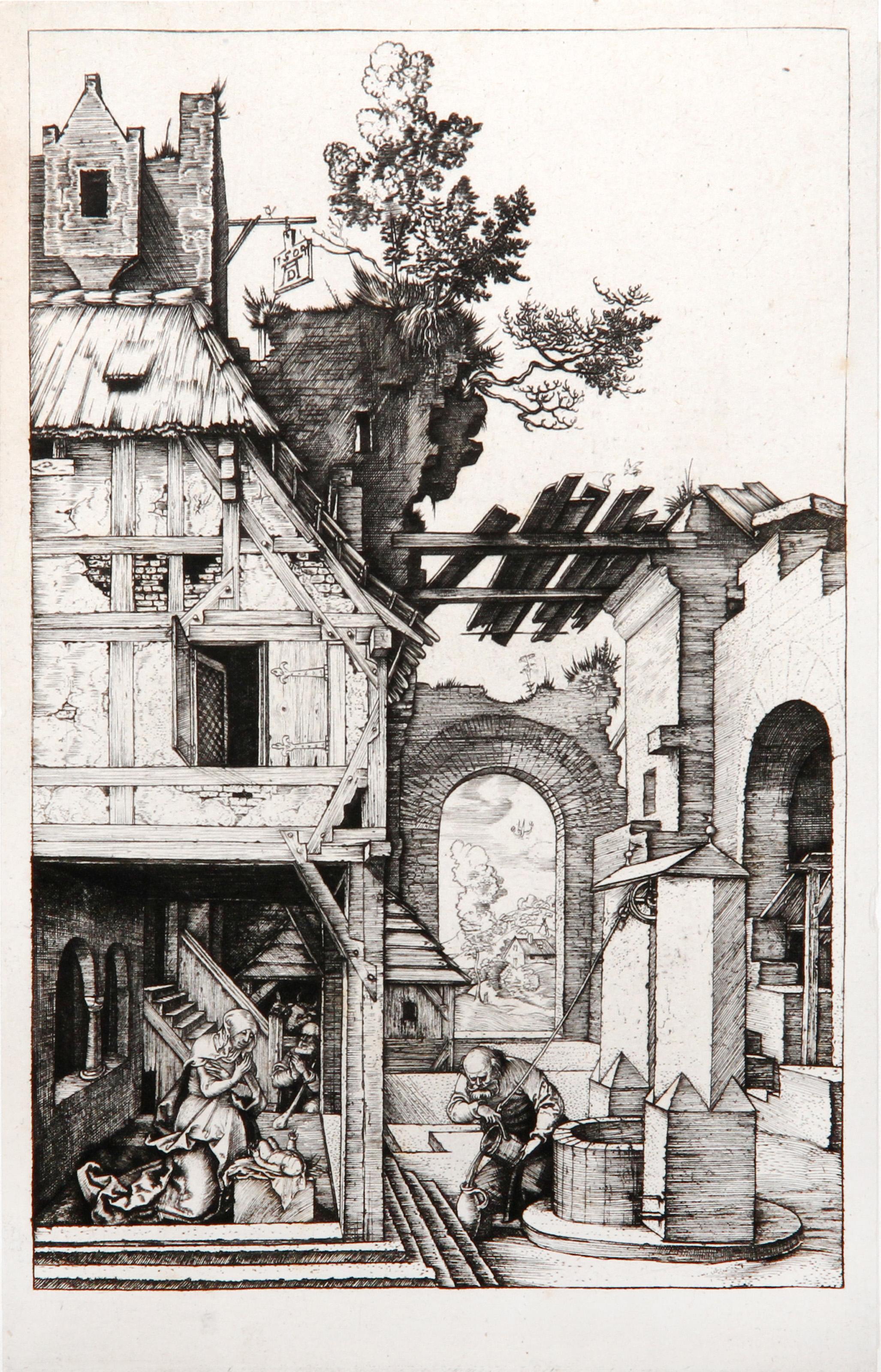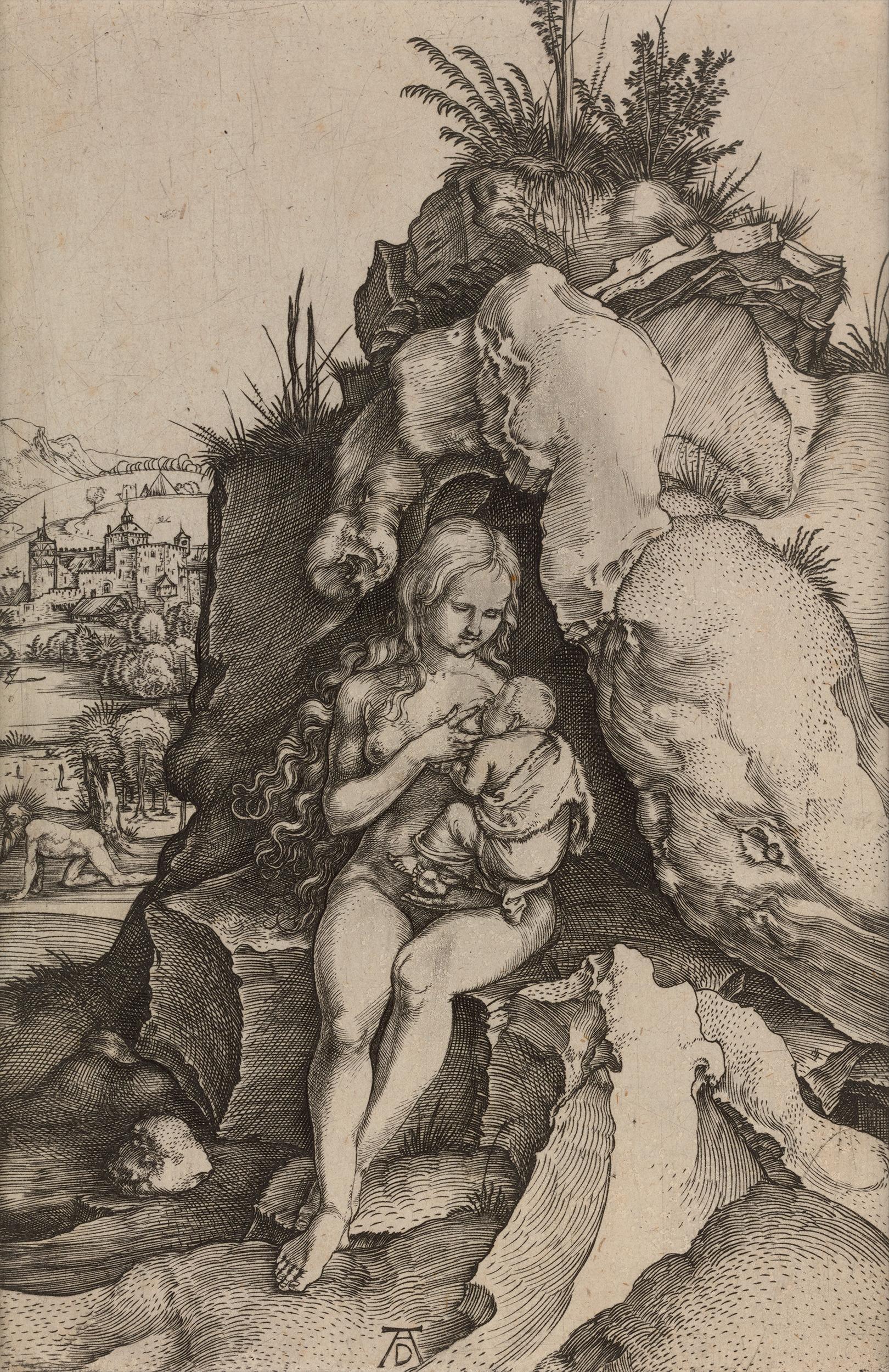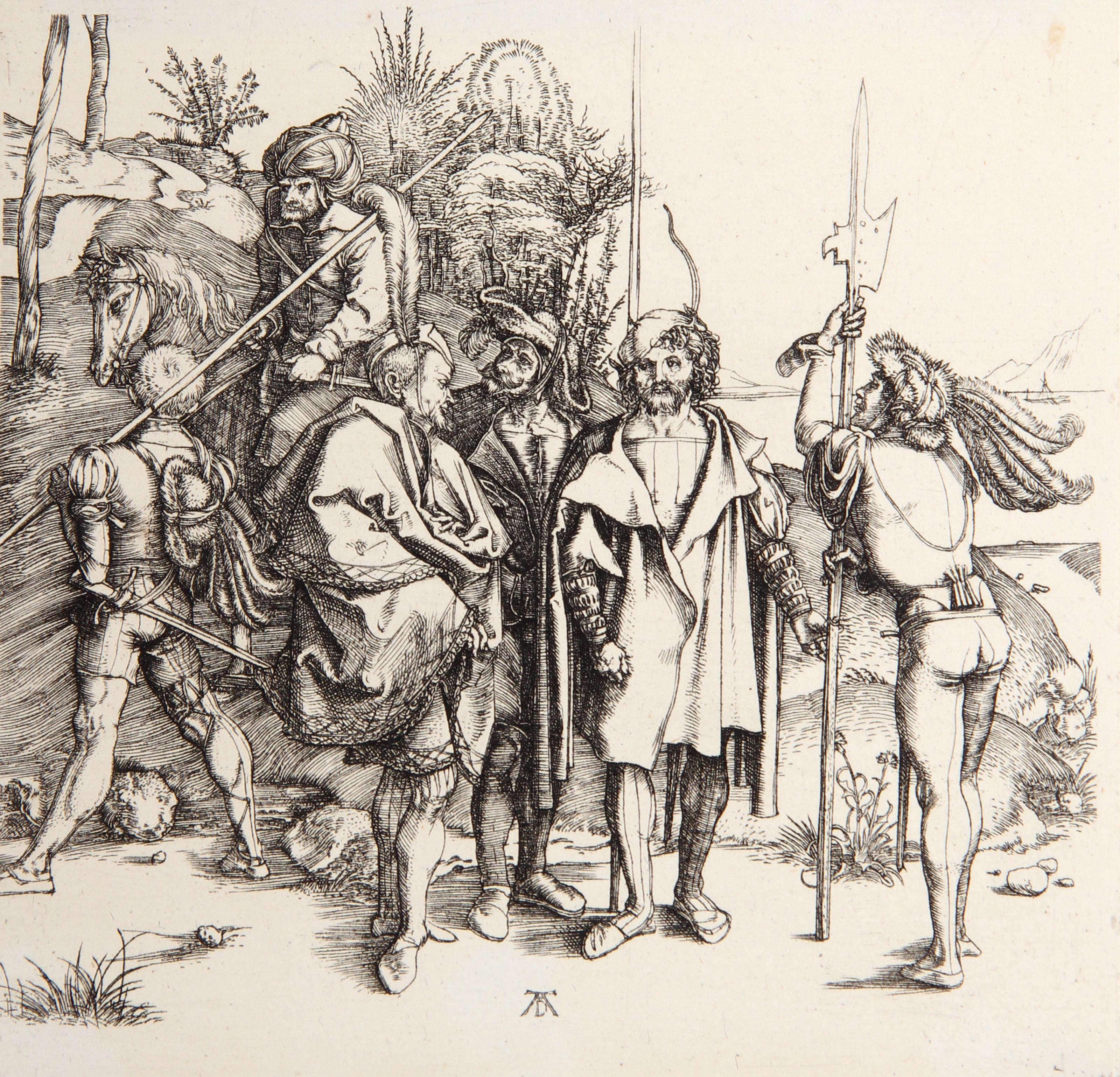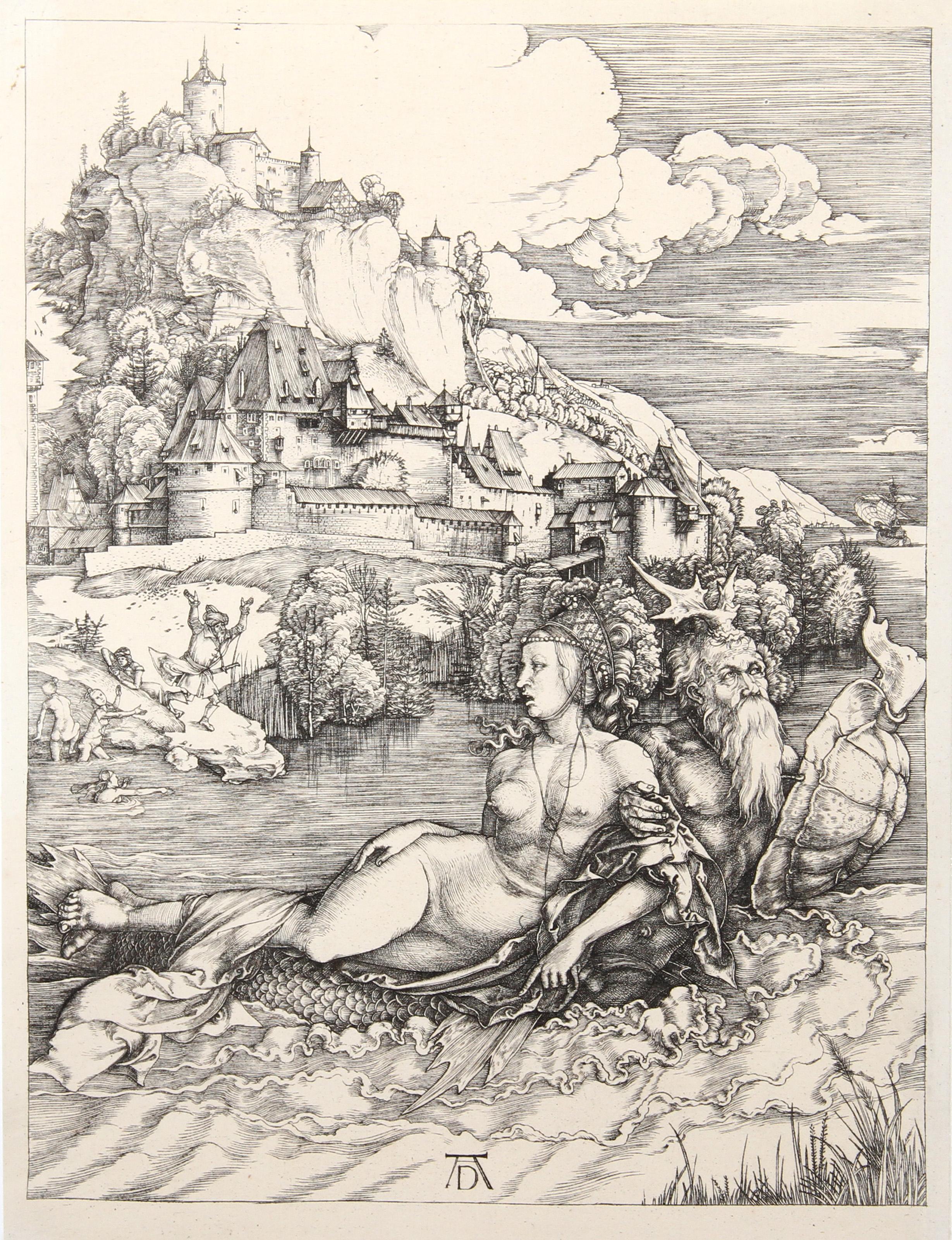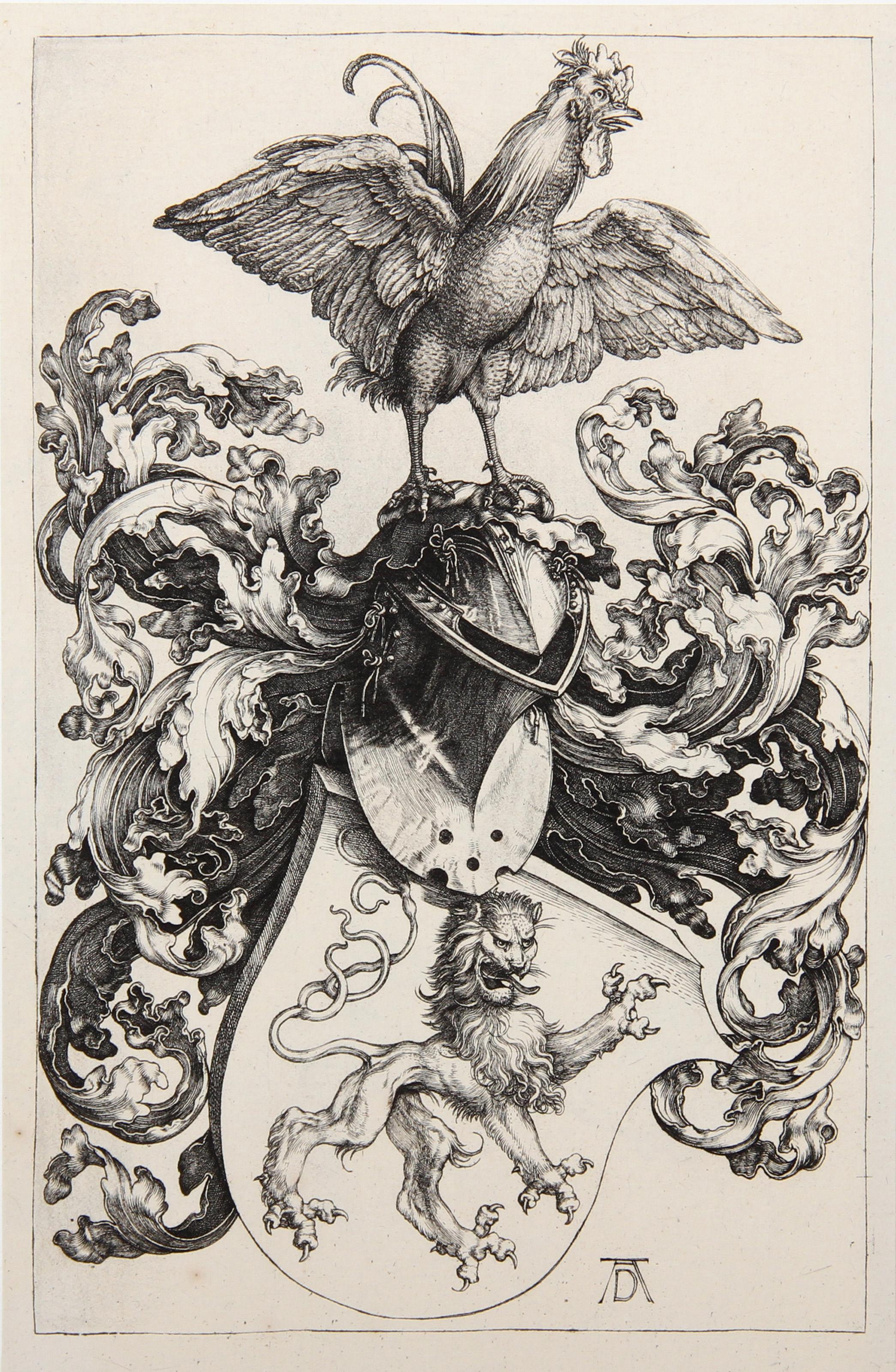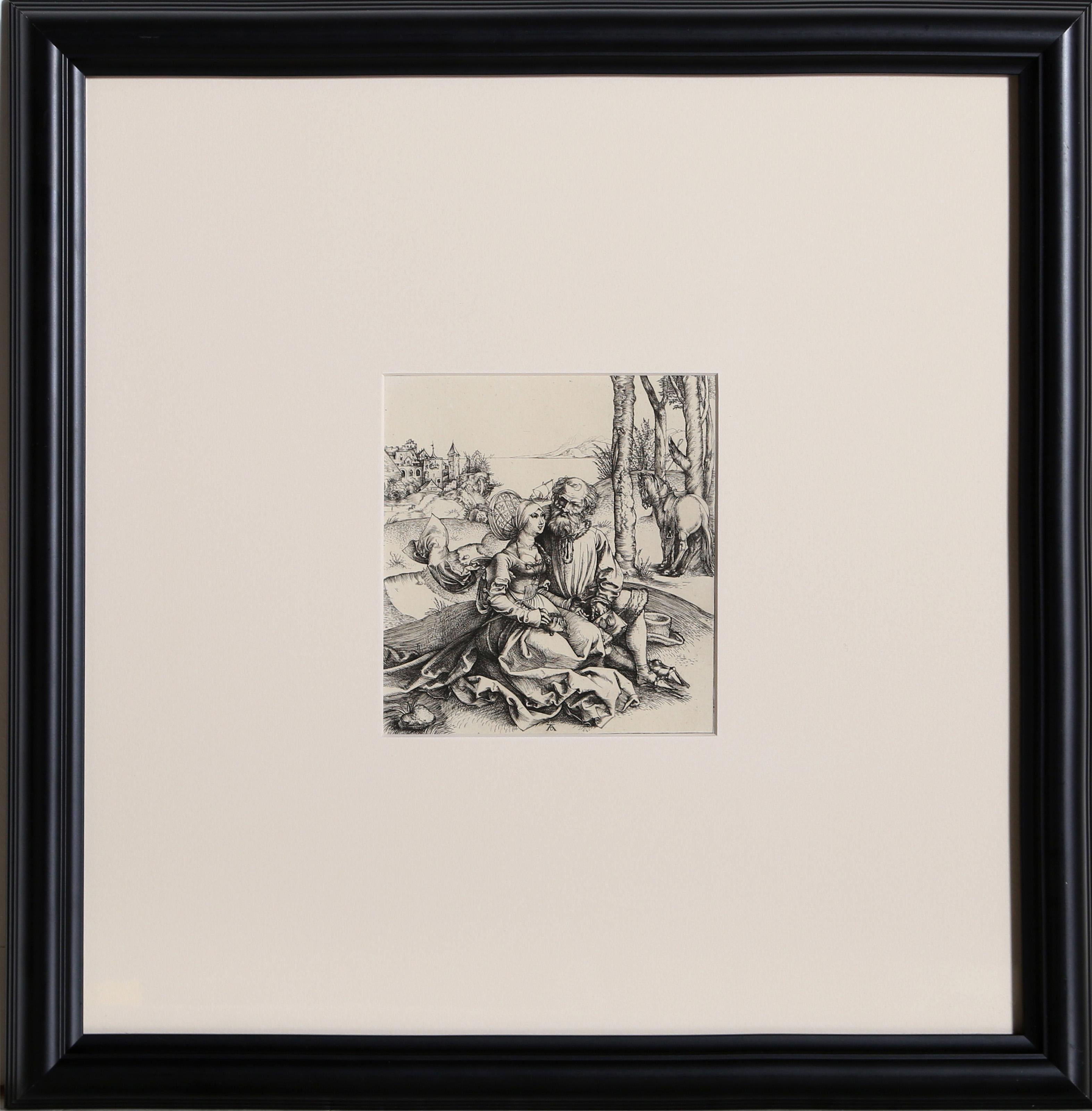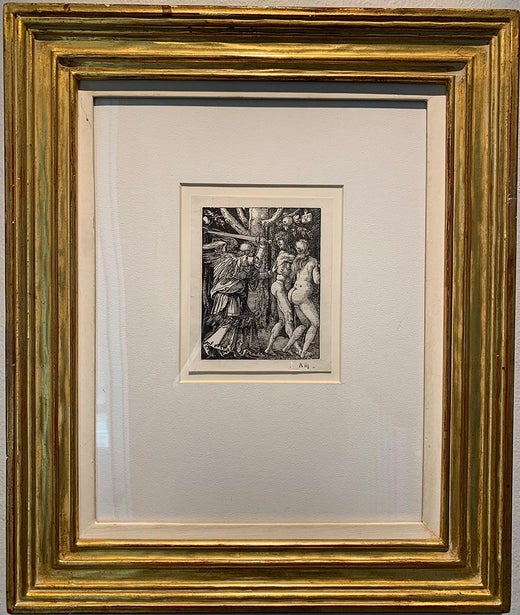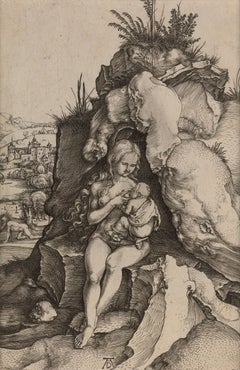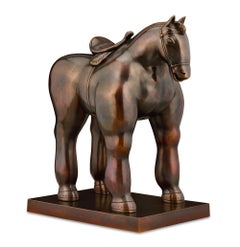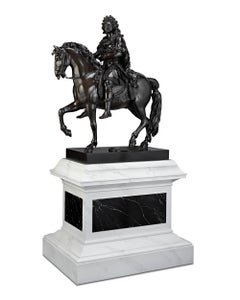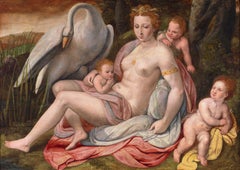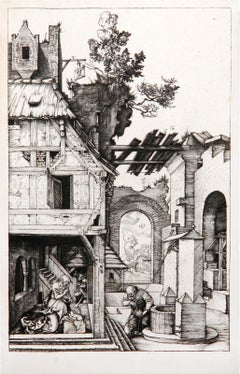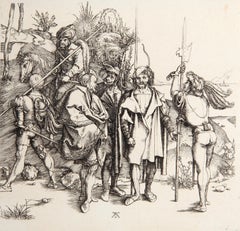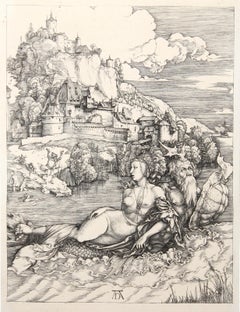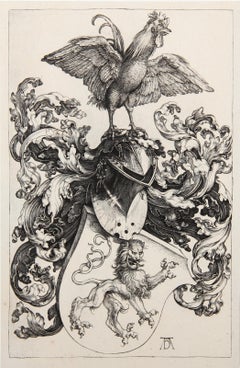Albrecht DürerThe Large Horse by Albrecht Dürer1505
1505
About the Item
- Creator:Albrecht Dürer (1471-1528, German)
- Creation Year:1505
- Dimensions:Height: 17.5 in (44.45 cm)Width: 13.5 in (34.29 cm)Depth: 1.13 in (2.88 cm)
- Medium:
- Movement & Style:
- Period:
- Condition:
- Gallery Location:New Orleans, LA
- Reference Number:Seller: 32-04691stDibs: LU18615875022
Albrecht Dürer
Albrecht Dürer revolutionized woodcut printmaking as an artform and his influence over the medium's practitioners has endured for centuries. Revered for his masterfully detailed prints and drawings, the German artist was driven by boundless curiosity. Dürer was the Renaissance personified in 16th-century northern Europe — he was more deeply engaged in the pursuits of the era’s Italian painters than any other artist from the region, an attribute that earned him the title “Leonardo of the North.”
Trained initially as a goldsmith in his father’s workshop, Dürer’s talent for art materialized early, in a self-portrait at the age of 13 in 1484. Held in the Albertina Museum in Vienna, this silverpoint drawing is one of the oldest extant self-portraits in European art.
While Dürer traveled extensively, his two stays in Venice, which took place during the turn of the 16th century, were among the most influential. There he became increasingly acquainted with the work of great Italian artists including Gentile and Giovanni Bellini, Antonio Pollaiuolo, Leonardo da Vinci and a young Raphael. Naturally, Dürer found great inspiration in the Venetians’ theoretical interests, techniques, use of color and more.
Over the course of his career, Dürer received commissions from Frederick the Wise-Elector of Saxony, Emperor Maximilian I and the Holy Roman Emperor Charles V. At one point he was commissioned to draw the first living rhinoceros seen in Europe since the Roman Empire. Despite having never actually seen the animal, Dürer made the now-famous c. 1515 woodcut based on one written account and brief sketch. For years it remained the common interpretation of what rhinos looked like to Europeans.
Dürer’s woodcuts were widely disseminated during his time, and he is the best known artist associated with the Northern Renaissance. His breathtaking technical prowess is most prominent in his three master engravings — Saint Jerome in His Study, Melencolia I and Knight, Death, and the Devil — profoundly influential works that are characterized by rich textures and meticulously detailed imagery.
Dürer’s work is in the collections of many museums, including the National Gallery in London and the Metropolitan Museum of Art in New York, while his former home in Nuremberg, Germany, has been converted into a museum dedicated to his legacy. Important works like Hare and Praying Hands can be found in the Albertina, while his second famous self-portrait from 1500 — which depicts Dürer in a fur-trimmed robe — is on display in the Alte Pinakothek in Munich.
Find original Albrecht Dürer prints and other art on 1stDibs.
- ShippingRetrieving quote...Shipping from: New Orleans, LA
- Return Policy
More From This Seller
View All15th Century and Earlier Old Masters More Art
Copper
Late 20th Century Figurative Sculptures
Bronze
19th Century Other Art Style Figurative Sculptures
Bronze
16th Century Old Masters Nude Paintings
Oil, Panel
17th Century Old Masters Figurative Prints
Etching
17th Century Old Masters Figurative Drawings and Watercolors
Etching, Paper
You May Also Like
Late 19th Century Old Masters Prints and Multiples
Etching
Late 19th Century Old Masters Prints and Multiples
Etching
Late 19th Century Old Masters Prints and Multiples
Etching
Late 19th Century Old Masters Prints and Multiples
Etching
Late 19th Century Old Masters Prints and Multiples
Etching
1870s Old Masters Prints and Multiples
Etching
Read More
Paul Revere Crafted This Silver Coffee Pot 250 Years Ago
Perhaps best known as a Revolutionary War hero, Revere was also an accomplished silversmith, and this pot is now available on 1stDibs.
Degas Portrayed These Exuberant Ukrainian Dancers with ‘Orgies of Color’
Discovered in Parisian cabarets, the performers reenergized the artist’s practice.
